45 paper chromatography of food dyes lab answers
Experiment 11 Pre-lab Assignment Food Dye Chromatography All of the FD&C approved food dyes are charged, water-soluble organic compounds that bind to natural ionic and polar sites in large food molecules, including proteins and carbohydrates. Food dyes can be separated and identified by paper chromatography. Paper Chromatography of Food Colour Dyes by Professor David Cash... There are many reasons why paper chromatography has been replacedby Thin Layer Chromatography (TLC) and by Gas Chromatography (GC) and High Performance Liquid Chromatography (HPLC) in modern laboratories, although it has a place in some uses and it does have the advantage of simplicity and low cost.
Solved Al-Home Chemistry Experiment Paper Chromatography of | ... Chemistry questions and answers Al-Home Chemistry Experiment Paper Chromatography of Food Dyes and Ink Objectives To identify the food drug and cosmetic (FD&C) dyes found in food/beverage samples (such as Koolaid, Gatorade, popsicles). or water-soluble markers, using the paper chromatography technique.

Paper chromatography of food dyes lab answers
Studocu 2 - General Chemistry 1100 lab reports Paper Chromatographic Separation of Food Dyes CHEM 1100. Purpose. The aim of this lab is to choose the best solvent between the solutions given which were water, 0﹪ NaCl, and 2-propanol. Another aim of this lab was to identify the three unknown from the mixtures of food dyes. Experiment 3: Separation and Identification of Food Dyes by Paper... the paper be removed from the solvent before the solvent front reaches the top of the paper because this will allow us to measure the distance the solvent moves from the origin line retention factor a unitless ratio that determines the relative affinities of components for the solvent Name Laboratory Date __ Section __ ment 11-Paper - Chegg Using paper chromatography, you separate a sample into 2 components. The distance from the origin to the solvent front is 1 1 5 mm. The distance from the origin to spot #1 is 43.5 mm, and the distance from the origin to spot #2 is 89.4mm. what is the Rr value for each spot?
Paper chromatography of food dyes lab answers. Solved . . LAB IV. CHROMATOGRAPHY OF FOOD DYES dolgo - Chegg Question: . . LAB IV. CHROMATOGRAPHY OF FOOD DYES dolgo • Chromatography is a method for separating the components of a mixture. A sample is applied to a solid surface, the chromatography paper, the stationary phase. The paper is placed in a solvent or solution, the mobile phase. The mobile phase moves up the paper by capillary action. Paper Chromatography of Food Dyes and Ink Smiley Lab Report Lab #5: Paper Chromatography of Food Dyes and Ink Esther Kadoch 1934019 Presented to Roger Machaalani Dawson College 202-BZF-00002 March 24th, 2021 March 31th, 2021 Data Sheet: Composition of the mobile phase: 0% (m/v) NaCl solution Distance of solvent front from origin (cm): 6.90-7 cm Experiment_726_Paper Chromatography_1_2_1 - Chemistry LibreTexts Feb 21, 2021 · Figure 1: Completed paper chromatography containing only 1 dye. In this experiment, students will measure the values of several dyes in 3 different solvent systems. Students will also analyze an unknown mixture of dyes in order to identify the dyes present in the mixture. Lab 2 - Paper Chromatography Flashcards | Quizlet 1. Use paper chromatography to determine retention factors (Rf) of food dyes. 2. Identify the dyes based on color, Rf, and fluorescence. Formula for Retention Factor. Rf= Distance component traveled/Distance solvent traveled. Pricniple of chromatography.
Name Laboratory Date __ Section __ ment 11-Paper - Chegg Using paper chromatography, you separate a sample into 2 components. The distance from the origin to the solvent front is 1 1 5 mm. The distance from the origin to spot #1 is 43.5 mm, and the distance from the origin to spot #2 is 89.4mm. what is the Rr value for each spot? Experiment 3: Separation and Identification of Food Dyes by Paper... the paper be removed from the solvent before the solvent front reaches the top of the paper because this will allow us to measure the distance the solvent moves from the origin line retention factor a unitless ratio that determines the relative affinities of components for the solvent Studocu 2 - General Chemistry 1100 lab reports Paper Chromatographic Separation of Food Dyes CHEM 1100. Purpose. The aim of this lab is to choose the best solvent between the solutions given which were water, 0﹪ NaCl, and 2-propanol. Another aim of this lab was to identify the three unknown from the mixtures of food dyes.


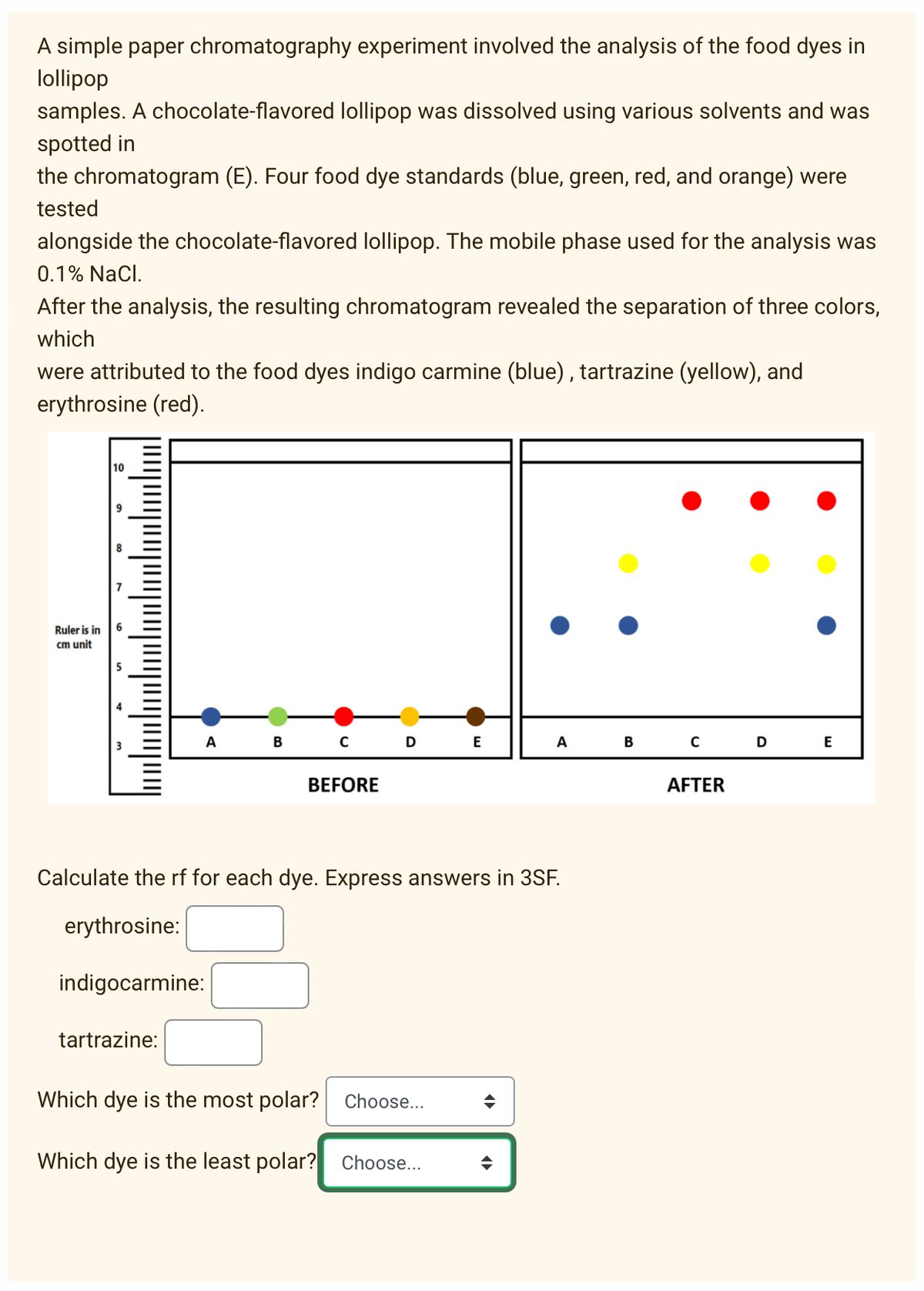
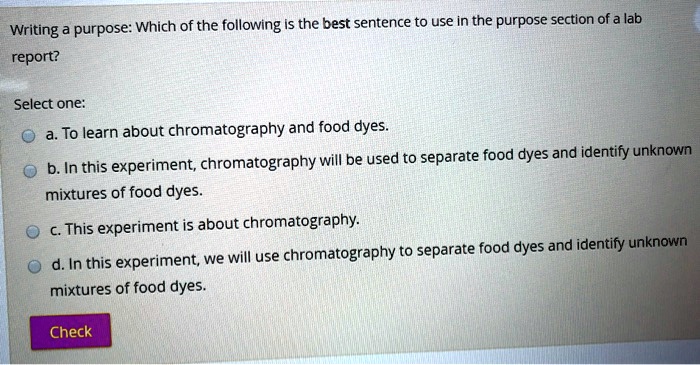
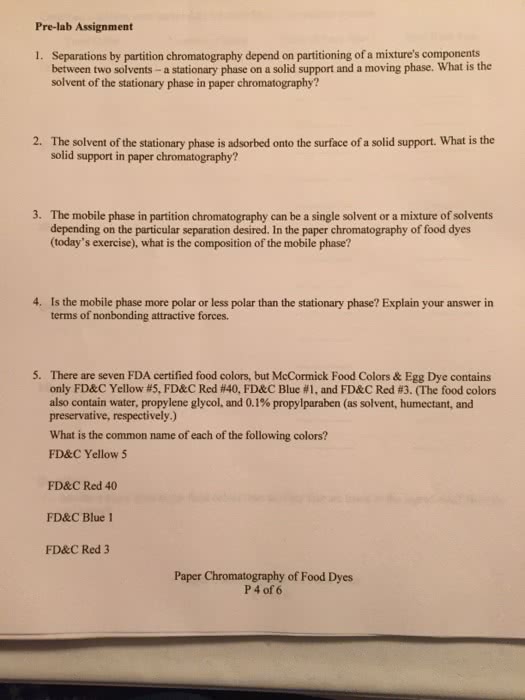
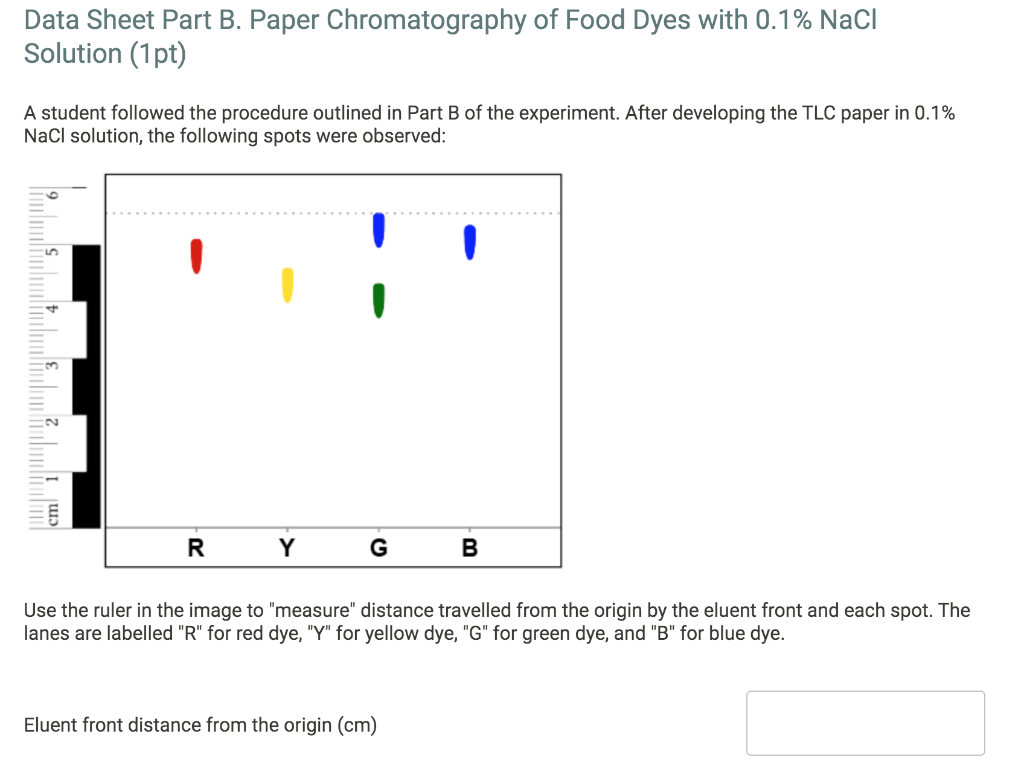



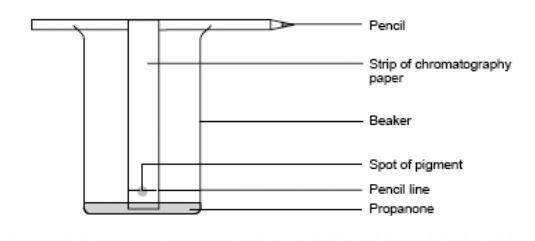


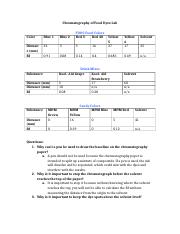



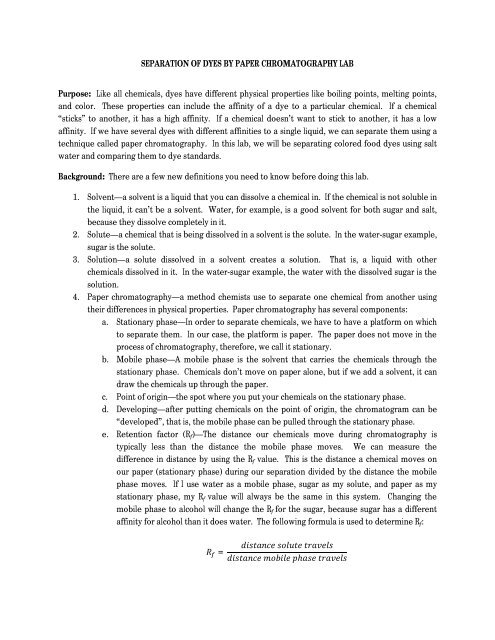
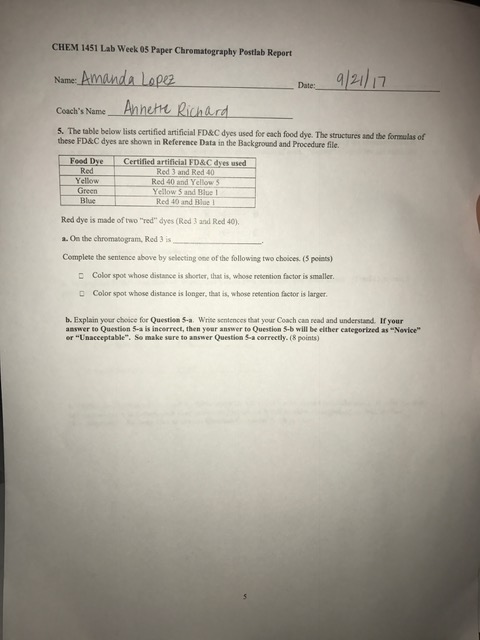
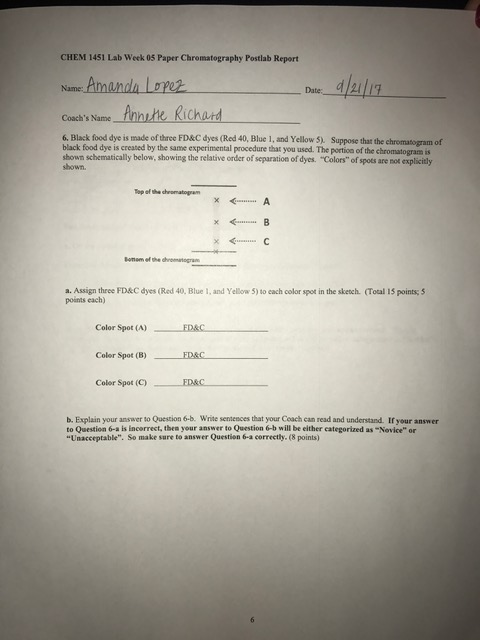






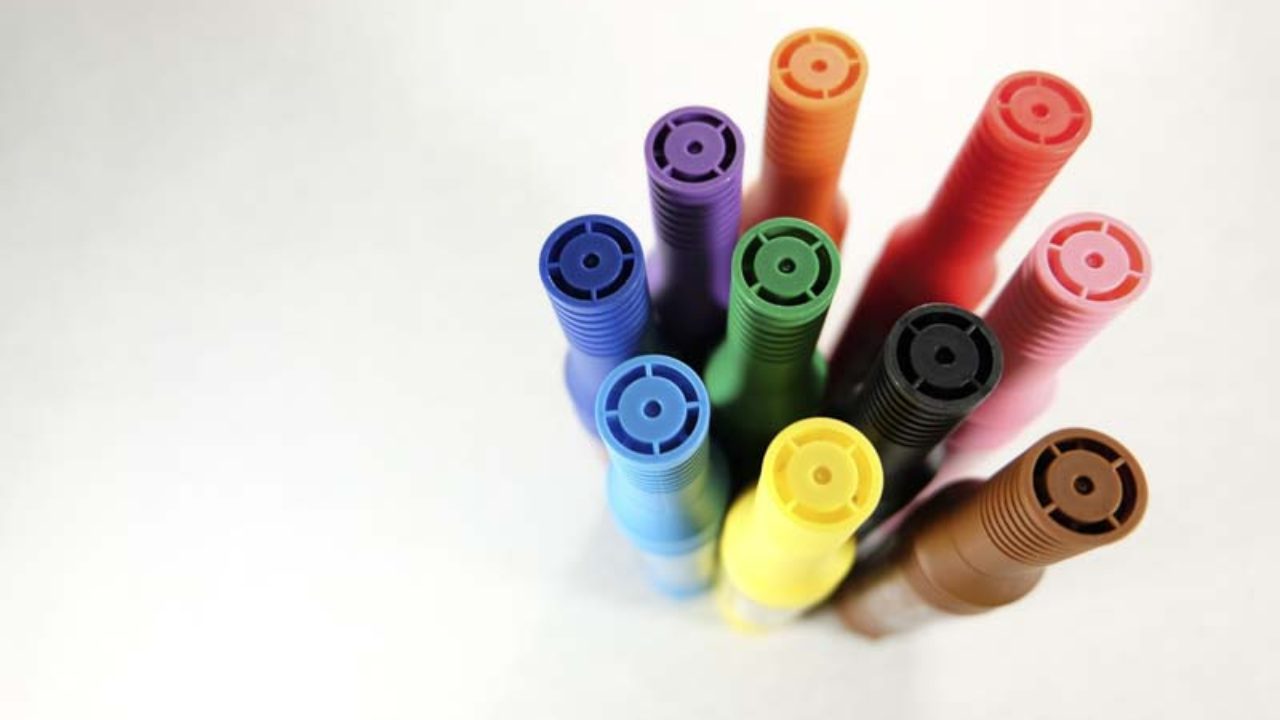






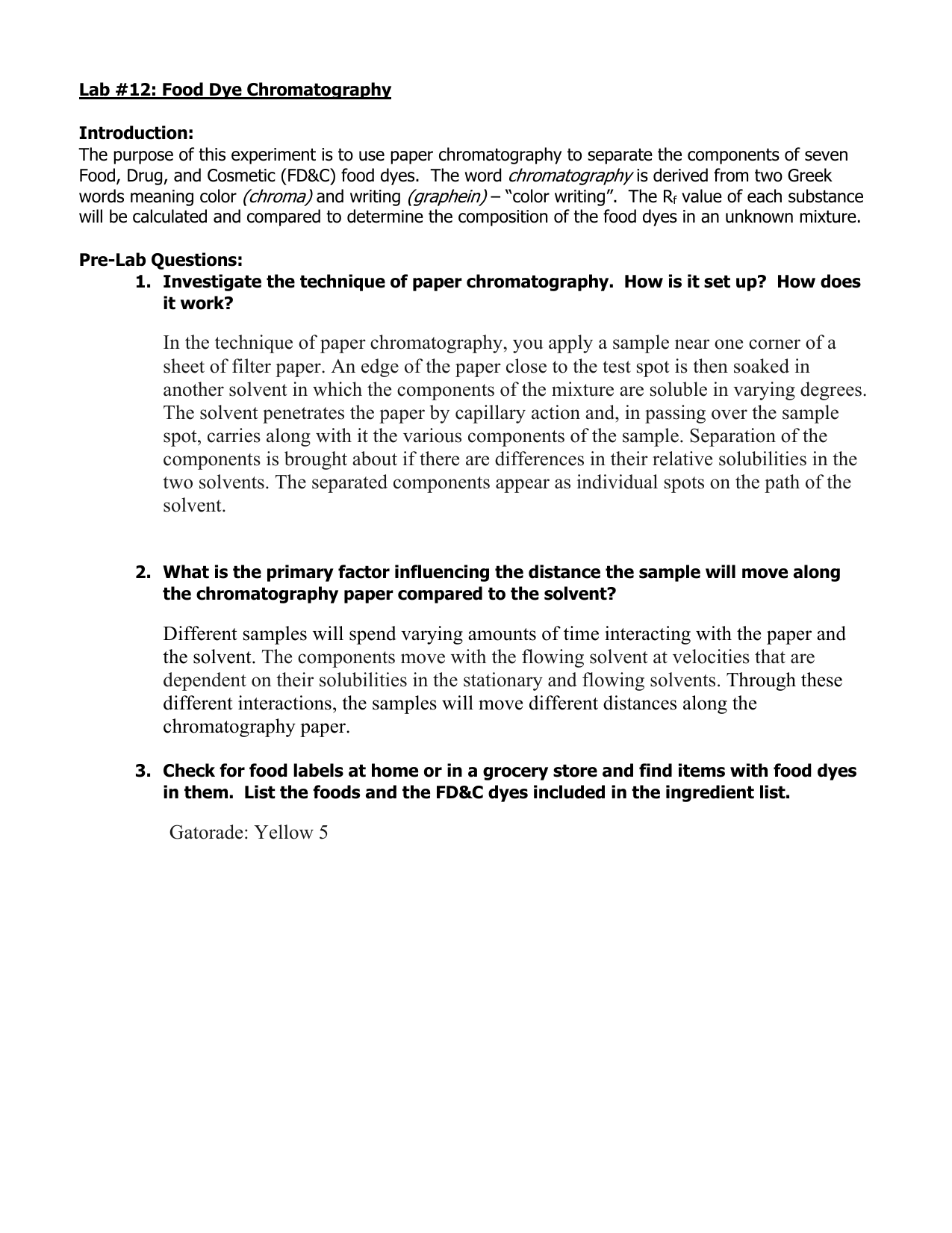
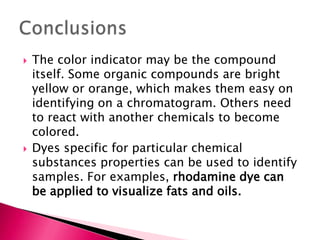
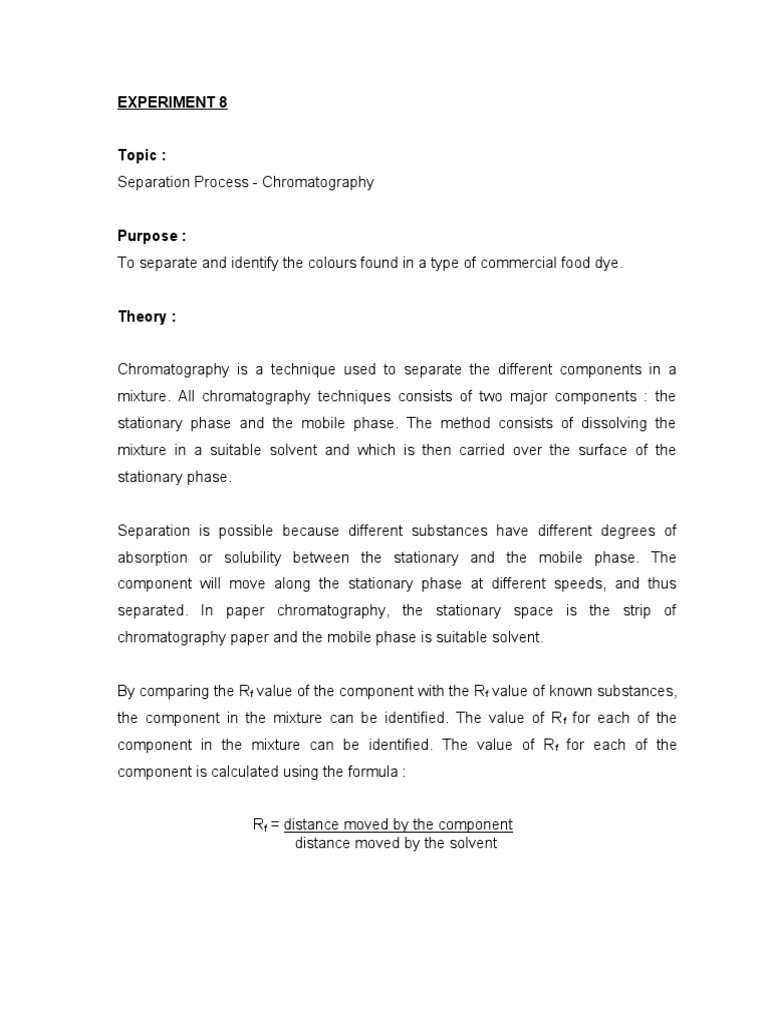
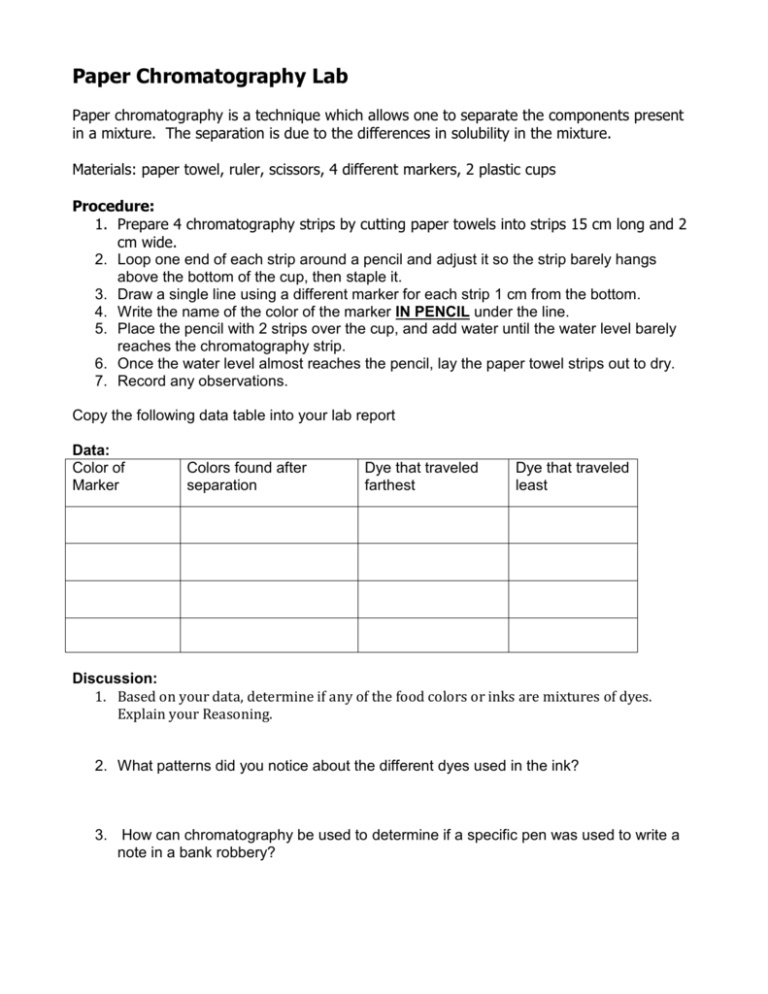

0 Response to "45 paper chromatography of food dyes lab answers"
Post a Comment